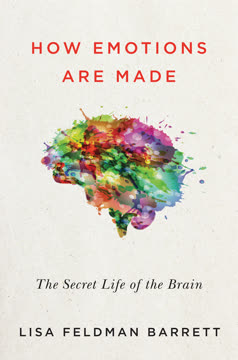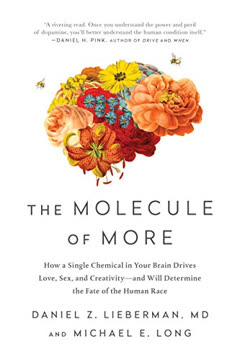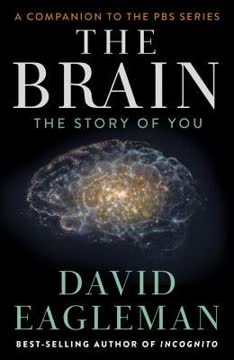Key Takeaways
1. The brain's plasticity enables adaptation and shapes our identity
All the experiences in your life – from single conversations to your broader culture – shape the microscopic details of your brain.
Neuroplasticity is key. The human brain's ability to rewire itself allows us to adapt to various environments and learn throughout our lives. This plasticity is most pronounced in childhood, where the brain forms and prunes connections based on experiences. However, it continues into adulthood, albeit at a slower pace.
Experiences shape us. Every interaction, from casual conversations to cultural immersion, physically alters our brain structure. This constant reshaping means our identity is not fixed but evolves as we accumulate experiences. The brain's adaptability is demonstrated in extreme cases, such as Cameron Mott, who functioned normally after having half her brain removed.
Key aspects of neuroplasticity:
- Pruning: The brain eliminates unused connections
- Strengthening: Frequently used connections become stronger
- Adaptation: The brain can reassign functions to different areas if needed
2. Our perception of reality is a constructed illusion
Your brain doesn't know and doesn't care where it gets the data. Whatever information comes in, the brain figures out what to do with it.
Reality is subjective. What we perceive as reality is actually a carefully constructed model created by our brains. This model is based on limited sensory input and our brain's interpretation of that input. Our senses don't provide a direct window to the world but rather a highly processed representation.
Sensory substitution demonstrates flexibility. Experiments show that the brain can adapt to receive information through unconventional channels. For example, blind people can "see" through their tongues or backs using sensory substitution devices. This reveals that our perception of reality is not fixed but can be altered and expanded.
Examples of constructed reality:
- Color doesn't exist in the external world, only in our perception
- Time perception can be distorted in high-stress situations
- Optical illusions reveal the brain's attempts to make sense of ambiguous information
3. Unconscious processes dominate decision-making and behavior
We are not aware of the decisions being made on our behalf.
The unconscious mind reigns. Most of our decisions and actions are driven by unconscious processes in the brain. These processes operate below our awareness, shaping our behavior, beliefs, and choices without our conscious input. This challenges the notion of free will and conscious control over our actions.
Autopilot and expertise. Many complex tasks, once learned, become automated and require little conscious effort. This frees up cognitive resources but can also lead to actions we're unaware of performing. Expertise in a skill often involves less conscious thought, as demonstrated by the difference in brain activity between a novice and an expert performing the same task.
Influences on unconscious decision-making:
- Priming: Subtle environmental cues affect our choices
- Emotions: Gut feelings guide many decisions
- Past experiences: Stored memories shape our reactions
- Biases: Unconscious prejudices impact our judgments
4. Social interaction is crucial for brain function and human survival
Normal brain function depends on the social web around us. Our neurons require other people's neurons to thrive and survive.
Humans are inherently social. Our brains are wired for social interaction, with specific neural circuits dedicated to understanding and connecting with others. This social nature has been crucial for human survival and the development of complex societies.
Isolation harms the brain. Lack of social interaction can lead to severe psychological distress and cognitive decline. The pain of social rejection activates the same brain regions as physical pain, underscoring the importance of social bonds to our well-being.
Key aspects of social neuroscience:
- Mirror neurons: Help us understand and empathize with others' actions
- Theory of mind: Allows us to attribute mental states to others
- Social pain: Rejection activates pain-processing brain regions
- Group dynamics: Tendency to form in-groups and out-groups
5. Technology and neuroscience are converging to enhance human capabilities
We are no longer a natural species that has to wait for sensory adaptations on an evolutionary timescale. As we move into the future, we will increasingly design our own sensory portals on the world.
Augmenting human senses. Advances in neuroscience and technology are enabling us to expand our sensory experiences beyond natural limitations. From cochlear implants for the deaf to experimental devices that allow us to "feel" data, we are entering an era of designed sensory experiences.
Brain-machine interfaces. Technology that allows direct communication between brains and external devices is progressing rapidly. This opens up possibilities for controlling prosthetic limbs with thought or even extending our physical capabilities beyond the human body.
Examples of human augmentation:
- Sensory substitution devices for the blind
- Brain-controlled prosthetics for amputees
- Experimental devices for "feeling" data streams
- Potential future enhancements of memory and cognition
6. Consciousness emerges from complex neural interactions
Everywhere you look you can find systems with emergent properties. No single hunk of metal on an airplane has the property of flight, but when you arrange the pieces in the right way, flight emerges.
Emergence explains consciousness. Consciousness is likely an emergent property arising from the complex interactions of billions of neurons in the brain. Like an ant colony exhibiting complex behavior through simple individual actions, consciousness emerges from the collective activity of simple neural units.
Integration and differentiation. Theories suggest that consciousness requires a balance between integration (widespread communication across brain regions) and differentiation (ability to represent distinct states). This balance allows for the rich, unified experience of consciousness.
Key concepts in consciousness research:
- Neural correlates of consciousness
- Integrated Information Theory
- Global Workspace Theory
- The Hard Problem of Consciousness
7. The future may involve digital immortality and non-biological existence
We're at a moment in human history when the marriage of our biology and our technology will transcend the brain's limitations.
Uploading consciousness. Future technologies might allow us to transfer our consciousness to non-biological substrates, potentially leading to a form of digital immortality. This could radically alter our concept of life, death, and human existence.
Simulated realities. If consciousness can be uploaded, it opens up possibilities for existing in simulated worlds or even exploring the cosmos by sending our digital selves to distant planets. This raises philosophical questions about the nature of reality and our place in it.
Implications of digital existence:
- Potential for vastly extended lifespans
- Ability to experience multiple realities
- Ethical considerations of copied consciousness
- Possibility that we are already living in a simulation
Last updated:
FAQ
What's "The Brain: The Story of You" about?
- Exploration of the Brain: The book delves into the complexities of the human brain, exploring how it shapes our identity, perceptions, and interactions with the world.
- Understanding Human Experience: It examines how our brains create our reality, influence our decisions, and drive our social behaviors.
- Neuroscience for Everyone: David Eagleman presents neuroscience in an accessible way, aiming to bridge the gap between academic research and everyday life.
- Future of Humanity: The book also speculates on the future of human evolution and the potential for merging biology with technology.
Why should I read "The Brain: The Story of You"?
- Insightful Content: It provides a deep understanding of how the brain functions and its impact on our lives.
- Accessible Science: The book is written in a way that makes complex scientific concepts understandable to non-experts.
- Relevance to Daily Life: It connects neuroscience to everyday experiences, helping readers understand themselves and others better.
- Futuristic Perspective: Offers a thought-provoking look at the future of human evolution and technology.
What are the key takeaways of "The Brain: The Story of You"?
- Brain Plasticity: The brain's ability to adapt and change throughout life is a central theme, highlighting its role in learning and recovery.
- Social Nature of Humans: The book emphasizes the importance of social interactions and how they shape our brain and behavior.
- Reality Construction: It explores how our brains construct our perception of reality, often leading to illusions and misconceptions.
- Future Possibilities: Eagleman discusses the potential for technological advancements to enhance human capabilities and alter our understanding of identity.
How does David Eagleman explain brain plasticity in the book?
- Adaptability: Eagleman describes the brain as a "livewired" organ, constantly reshaping itself in response to experiences and environments.
- Childhood Development: He explains how the brain's wiring is particularly flexible during childhood, allowing for rapid learning and adaptation.
- Adult Plasticity: While less pronounced than in children, adult brains also exhibit plasticity, enabling learning and recovery from injuries.
- Implications for the Future: The concept of plasticity suggests potential for future enhancements through technology and new sensory experiences.
What is the significance of social interactions according to "The Brain: The Story of You"?
- Essential for Survival: Social interactions are crucial for normal brain function and human survival, as emphasized by Eagleman.
- Empathy and Understanding: The book explores how our brains are wired to empathize and understand others, which is vital for social cohesion.
- Impact of Isolation: Eagleman discusses the detrimental effects of social isolation on mental health, highlighting the brain's need for social connections.
- Group Dynamics: The book examines how group behavior and social structures influence individual brain function and decision-making.
How does "The Brain: The Story of You" address the concept of reality?
- Constructed Perception: Eagleman explains that our perception of reality is a construction of the brain, influenced by sensory inputs and past experiences.
- Illusions and Misconceptions: The book discusses how the brain can be tricked by illusions, revealing the subjective nature of reality.
- Role of Expectations: Our expectations and prior knowledge shape how we perceive the world, often leading to biases and errors.
- Implications for Understanding: Understanding the brain's role in constructing reality can help us better navigate our perceptions and interactions.
What does David Eagleman say about decision-making in the book?
- Complex Process: Decision-making is portrayed as a complex interplay of competing neural networks, each with its own goals and desires.
- Role of Emotions: Emotions play a crucial role in decision-making, providing quick summaries of situations to guide choices.
- Influence of the Unconscious: Many decisions are influenced by unconscious processes, highlighting the brain's hidden operations.
- Improving Decisions: Eagleman suggests that understanding these processes can lead to better decision-making strategies and societal policies.
How does "The Brain: The Story of You" explore the future of human evolution?
- Technological Integration: Eagleman speculates on the integration of technology with biology, potentially enhancing human capabilities.
- Sensory Augmentation: The book discusses the possibility of adding new senses to the human experience through technological advancements.
- Extended Lifespan: Eagleman explores the potential for extending human life and consciousness through scientific innovations.
- Ethical Considerations: The book raises questions about the ethical implications of altering human biology and identity.
What are the best quotes from "The Brain: The Story of You" and what do they mean?
- "Our brains are like snowflakes": This quote emphasizes the uniqueness of each individual's brain, shaped by personal experiences and environments.
- "We are works in progress": Eagleman highlights the ongoing nature of brain development and identity formation throughout life.
- "The brain is a relentless shape-shifter": This reflects the concept of brain plasticity, illustrating its ability to adapt and change.
- "We need each other": A reminder of the fundamental social nature of humans and the importance of social connections for brain health.
How does David Eagleman address the mind-body problem in the book?
- Neuroscientific Perspective: Eagleman explores the relationship between mental experiences and physical brain activity, challenging traditional dualism.
- Consciousness and Brain Activity: He discusses how consciousness emerges from complex neural interactions, rather than being separate from the brain.
- Impact of Brain Changes: The book examines how changes in brain structure or chemistry can alter personality and behavior, supporting a monistic view.
- Ongoing Mystery: While providing insights, Eagleman acknowledges that the mind-body problem remains one of neuroscience's greatest challenges.
What methods does "The Brain: The Story of You" suggest for enhancing brain function?
- Lifelong Learning: Eagleman advocates for continuous learning and mental challenges to promote brain health and plasticity.
- Social Engagement: Maintaining strong social connections is emphasized as crucial for cognitive function and emotional well-being.
- Physical Activity: Regular exercise is highlighted as beneficial for brain health, supporting memory and cognitive abilities.
- Technological Aids: The book explores the potential of technology to augment sensory experiences and cognitive capabilities.
How does "The Brain: The Story of You" relate to current neuroscience research?
- Cutting-Edge Insights: The book incorporates the latest findings in neuroscience, providing a contemporary understanding of brain function.
- Bridging Science and Life: Eagleman connects scientific research to everyday experiences, making complex concepts relatable and applicable.
- Future Directions: The book discusses emerging areas of research, such as brain-machine interfaces and sensory augmentation.
- Interdisciplinary Approach: Eagleman draws on insights from psychology, biology, and technology to present a holistic view of the brain.
Review Summary
The Brain: The Story of You receives mostly positive reviews for its accessible introduction to neuroscience. Readers praise Eagleman's engaging writing style and fascinating examples. The book covers topics like consciousness, decision-making, and social behavior. Some find it lacks depth for those already familiar with neuroscience. Critics note repetitive phrases and oversimplification of complex concepts. Overall, it's recommended as an entertaining primer on brain science for general readers, though those seeking more advanced material may be disappointed.
Similar Books






Download PDF
Download EPUB
.epub digital book format is ideal for reading ebooks on phones, tablets, and e-readers.







